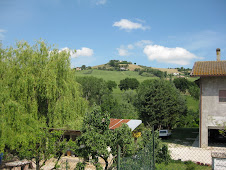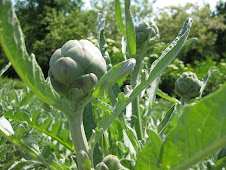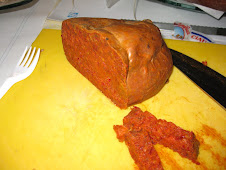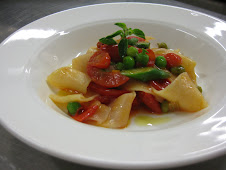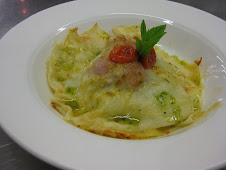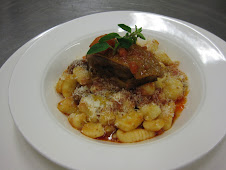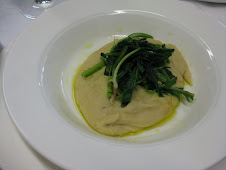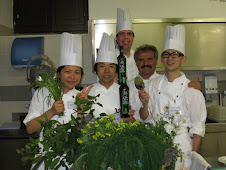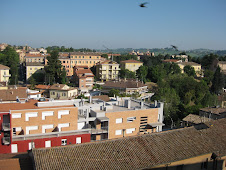I went to Italy seeking inspiration. Did I find it? Yes. Did I find all the answers I was looking for? No. The school I attended was fantastic and exceeded my expectations, the food spectacular, the people wonderful and the scenery breathtaking. But, instead of feeling sated with as much as I learned about food, language, and culture I left the country feeling like there was much more for me to absorb.
The experience gave me plenty to ponder, one of those things being teaching. I am going to say something and I hope it does not sound preachy, but I think that all teachers should be required to return to school to experience being a student again. Turning the tables makes it very easy to evaluate effective teaching methods, gives us insight into our own strengths and weaknesses, and reminds us to have empathy with our students. Simply put many teachers forget what it was like to be a student, and if you want to be a great teacher you probably shouldn’t.
I was reminded of how wonderful it is to be a student, and how easy it is compared to work! Studying is fun!
I was reminded that my love and passion for food has never been greater.
I learned I could eat more than I ever dreamed possible. But, a couple weeks before leaving I thought to myself “I can’t go on eating like this much longer”; I could not believe my mind! About half way through the course the Japanese students began to ritualistically rub my belly. Il Pancha was my name.
I can’t tell you how many incredible meals I ate while listening to crappy American music, the culture is far from perfect.
I could get great espresso at any roadside gas station, but I can’t get one here even at the local Starbucks?
I am more committed than ever to the Slow Food Movement, and to supporting local food which is good, clean, and fair.
I did discover a deeper passion within myself to learn more about our country’s regional traditions, products, and cooking techniques. I feel more compelled than ever to pass my knowledge on to others and help fight to restore and protect the great food heritage of this country.
I would like to send out a sincere thanks to all that helped make this possible especially the students, faculty, and staff at the Art Institute of Charlotte, and to my wife and daughter who experienced La Dolce Vita with me. Go out and buy some locally grown products from a farmers market near you and go home and cook some real food with your family! Keep it fresh, and keep it simple! Buon Appetito
Tuesday, August 26, 2008
Tuesday, August 5, 2008
A Passion for the Piemonte? Yes!
I have probably said this many times while writing these articles and I mean it every time, but I love the Piemonte. The rich and glorious Piemonte is set in the North-West of Italy and borders France and Switzerland. I have had the fortune to travel, explore, and consume the Piemonte on several occasions. From the magnificent Lago Maggiore in the North to the beautiful and elegant city of Cuneo in the South the Piemonte is a region which inspires, both because of its natural beauty and from my point of view more importantly, its gastronomic treasures. In fact you may remember reading two years ago in this paper about some nutty people so inspired by what they found at the local market in Cuneo that they decided to cook lunch on the engine of their rental car as they drove from Cuneo to the town of Barolo. Those nuts would be me, farmer extraordinaire Sammy Koenigsberg, Charlotte Slow Food Convivium Leader Thom Duncan, and his wife Nancy Duncan. I don’t mind reminding you either that we had an extraordinary meal in a field overlooking the town and vineyards of Barolo. Yeah, I love the Piemonte.
Where to start and where to end? The region is so gastronomically rich it is hard to narrow it down to a few primary ingredients or dishes. The big guns, the white truffle of Alba, Barolo wines, and Piedmontese beef are opulent and obvious choices. The white truffle, limited to a small region around the town of Alba, is only available from about mid-October to January, and cost about $2,500 per pound. The region’s beef is featured in the classic dish of the region Gran Bollito Misto a dish of mixed boiled meats usually served with three dipping sauces. The beef is also featured in Insalate di Carne Cruda, chopped raw meat seasoned with Ligurian Olive Oil, garlic, lemon juice, salt and pepper. Though Barolo may be the big name, the region produces many more fine red wines such as Barbaresco, Gattinara, Barbera, Dolcetto, and tasty and fun whites such as Asti Spumante and Moscato d’ Asti.
Although the above mentioned are some of the most famous and expensive products the region is rich with many more affordable, yet exquisite offerings. Spectacular cheeses such as Castelmagno, Raschera, Bra, Toma and more are produced throughout the mountainous part of the region. In the plains the famous Grana Padano and Gorgonzola are produced in large quantities. The Piemonte is famous for its rice, and is the largest producer of rice in Europe. The plains of the Po river valley offer optimum conditions for growing short grain varieties such as Arborio, Carnaroli, and Vialone to be used in risottos, salads, and desserts. The region is particularly noted for its quality of several vegetables including cardoons, sweet bell peppers, potatoes, and leeks. In the hills mushrooms, chestnuts, hazelnuts, and wild berries are plentiful. Turin is the largest city in the region and is considered the Chocolate and Coffee capital of Italy. The pasta used to create classic dishes such as Agnolotti and Tajarin is rich egg pasta. The Tajarin are the Piedmontese version of Tagliatelle, only thinner. They are hand cut very fine noodles, like Angel Hair pasta. The classic recipe can have as many as 20 egg yolks per pound of flour! The Agnolotti al Plin are a stuffed pasta like a ravioli, but they are typically pinched (Plin) off before cutting.
Where to start and where to end? The region is so gastronomically rich it is hard to narrow it down to a few primary ingredients or dishes. The big guns, the white truffle of Alba, Barolo wines, and Piedmontese beef are opulent and obvious choices. The white truffle, limited to a small region around the town of Alba, is only available from about mid-October to January, and cost about $2,500 per pound. The region’s beef is featured in the classic dish of the region Gran Bollito Misto a dish of mixed boiled meats usually served with three dipping sauces. The beef is also featured in Insalate di Carne Cruda, chopped raw meat seasoned with Ligurian Olive Oil, garlic, lemon juice, salt and pepper. Though Barolo may be the big name, the region produces many more fine red wines such as Barbaresco, Gattinara, Barbera, Dolcetto, and tasty and fun whites such as Asti Spumante and Moscato d’ Asti.
Although the above mentioned are some of the most famous and expensive products the region is rich with many more affordable, yet exquisite offerings. Spectacular cheeses such as Castelmagno, Raschera, Bra, Toma and more are produced throughout the mountainous part of the region. In the plains the famous Grana Padano and Gorgonzola are produced in large quantities. The Piemonte is famous for its rice, and is the largest producer of rice in Europe. The plains of the Po river valley offer optimum conditions for growing short grain varieties such as Arborio, Carnaroli, and Vialone to be used in risottos, salads, and desserts. The region is particularly noted for its quality of several vegetables including cardoons, sweet bell peppers, potatoes, and leeks. In the hills mushrooms, chestnuts, hazelnuts, and wild berries are plentiful. Turin is the largest city in the region and is considered the Chocolate and Coffee capital of Italy. The pasta used to create classic dishes such as Agnolotti and Tajarin is rich egg pasta. The Tajarin are the Piedmontese version of Tagliatelle, only thinner. They are hand cut very fine noodles, like Angel Hair pasta. The classic recipe can have as many as 20 egg yolks per pound of flour! The Agnolotti al Plin are a stuffed pasta like a ravioli, but they are typically pinched (Plin) off before cutting.
Subscribe to:
Comments (Atom)











































































